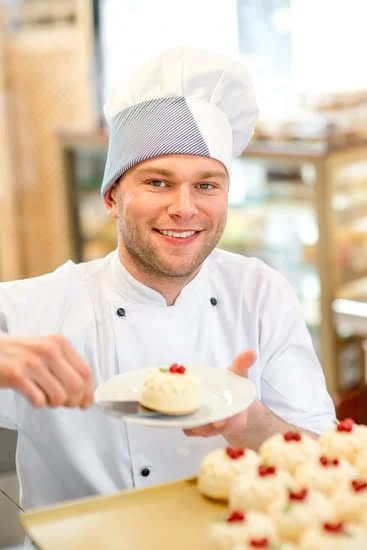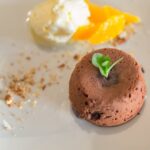Are you wondering how to decorate a cake with? Cake decorating is an art that allows bakers to express their creativity and add a personal touch to their sweet creations.
Whether you’re a beginner or an experienced baker, learning the essentials of cake decorating can take your confectionary skills to the next level. From choosing the right tools and icing to mastering basic techniques and creating intricate designs, this guide will take you through the process of decorating a cake like a pro.
When it comes to cake decorating, having the right tools is essential. From piping bags and tips to offset spatulas and turntables, each tool plays a crucial role in achieving professional-looking results. Along with tools, choosing the right type of icing for your cake is another important factor that can make or break your decoration efforts. Whether it’s buttercream, royal icing, or fondant, selecting the appropriate icing is key to executing your desired design.
In this comprehensive guide, we’ll cover everything from basic techniques for decorating a cake to using fondant to create professional touches. Additionally, we’ll explore how to achieve a smooth cake surface, add finishing touches with edible decorations and garnishes, troubleshoot common decorating problems, and finally showcase your masterpiece. So let’s dive into the world of cake decorating and unleash your artistic potential.
Essential Tools for Cake Decoration
When it comes to decorating a cake, having the right tools is essential for achieving professional-looking results. Here are some of the essential tools that every cake decorator should have in their arsenal:
- Offset Spatula: This tool is crucial for spreading and smoothing out icing on the surface and sides of a cake. Its angled shape allows for better control and precision.
- Piping Bags and Tips: Piping bags are used to apply decorative elements such as frosting, buttercream, or royal icing onto the cake. They come in various sizes and materials, while piping tips create different designs and textures.
- Turntable: A turntable is a rotating stand that makes it easier to frost and decorate a cake evenly from all angles without having to move the cake itself.
- Bench Scraper: This tool is used to achieve sharp edges and smooth sides on a frosted cake. It can also be used to remove excess icing or fondant from the surface.
- Cake Decorating Brushes: These soft-bristled brushes are used for glazing or applying edible paint, as well as for adding subtle details or shimmer to the cake.
These are just a few examples of essential tools that every aspiring baker should have when learning how to decorate a cake with precision and finesse. Each tool serves a specific purpose in achieving flawless decoration, so investing in quality items will make the process much easier and enjoyable.
Choosing the Right Type of Icing for Your Cake
When it comes to decorating a cake, choosing the right type of icing is crucial in achieving the desired look and taste. There are several different types of icing that you can use to decorate a cake, each with its own unique characteristics and techniques. Here are some popular options for you to consider:
- Buttercream: Buttercream icing is a classic choice for decorating cakes. It is smooth, creamy, and versatile, making it easy to work with for both simple and intricate designs. Buttercream can be colored and flavored in various ways to suit your preferences.
- Fondant: Fondant is a pliable icing that can be rolled out into thin sheets and draped over a cake for a flawless, smooth finish. It is popular for creating professional-looking designs and can be shaped and molded into elaborate decorations.
- Royal Icing: Royal icing dries to a hard, shiny finish, making it ideal for intricate piping work and creating delicate details on cakes. It’s commonly used for decorating gingerbread houses as well.
Once you have chosen the type of icing that best suits your needs and design vision, you can then move on to mastering the basic techniques for decorating a cake.
Basic Techniques for Decorating a Cake
When it comes to decorating a cake with icing, there are several basic techniques that you should familiarize yourself with in order to achieve professional-looking results.
- Crumb Coating: Before applying your final layer of icing, it’s essential to do a crumb coat first. This thin layer of icing seals in any loose crumbs on the cake’s surface, allowing for a smooth finish when the final layer is applied.
- Smooth Icing: To achieve a perfectly smooth surface on your cake, use an offset spatula or bench scraper to evenly spread the icing around the sides and top of the cake.
- Piping: Piping is used to create decorative borders, lettering, flowers, and other intricate designs on cakes using a pastry bag fitted with various tips. Practice different piping techniques such as dots, stars, rosettes, and leaves to add visual interest to your cake.
Mastering these basic techniques will provide you with a strong foundation for further developing your skills in cake decoration with various types of icings.
Basic Techniques for Decorating a Cake
When it comes to decorating a cake, there are some basic techniques that every baker should master. One of the most essential skills is how to properly ice a cake. Start by applying a thin layer of icing, also known as crumb coating, and then let it set before adding the final layer. This will help to ensure that your cake has a smooth and professional-looking finish.
Another important technique is how to use an offset spatula for smoothing out the frosting on the sides and top of the cake. Hold the spatula at a slight angle and rotate the cake as you smooth out the icing. This will help to create a seamless look and remove any excess frosting.
Finally, mastering the art of creating borders can take your cake decorating skills to the next level. Use a piping bag fitted with a decorative tip to pipe borders around the top and bottom edges of your cake. Practice different designs and patterns to find what works best for your specific cake design.
| Tool | Use |
|---|---|
| Offset Spatula | Smoothing out frosting |
| Piping Bags and Tips | Creating decorative borders |
| Bench Scraper | Achieving straight sides on cakes |
Creating Intricate Designs With Piping
Decorating a cake with piping is a classic and elegant way to create intricate designs that will impress your guests. Whether you’re a beginner or an experienced baker, mastering the art of piping can take your cake decorating skills to the next level. In this section, we will explore the techniques and tips for creating beautiful designs with piping.
Using Different Piping Tips
One of the essential tools for piping is the piping tip. Different tips create different designs, so it’s important to have a variety of tips in your collection. For delicate designs such as lace or flowers, use a small round tip. For bold and dramatic lines, use a large star or petal tip. Experimenting with different tips will allow you to create a wide range of designs on your cakes.
Mastering Pressure and Consistency
When using piping bags, it’s important to master the right amount of pressure and consistency of icing. Too much pressure can cause the icing to come out too quickly, while too little pressure can result in inconsistent lines. Practice controlling the pressure and consistency of your icing by piping on parchment paper before decorating your cake.
Creative Piping Techniques
In addition to basic lines and shapes, there are various creative piping techniques that can elevate your cake decoration skills. From rosettes and ruffles to basketweave and scrollwork, these advanced techniques require patience and practice but can result in stunning designs on your cakes.
Learning how to decorate a cake with intricate designs using piping takes time and patience, but with practice, you’ll be able to create professional-looking cakes that are sure to impress. The key is to start with basic techniques and gradually work your way up to more elaborate designs as you gain confidence in your skills.
Using Fondant to Add Professional Touches
Fondant is a versatile and popular choice for adding professional touches to cake decorations. It is a smooth, pliable icing that can be rolled out and draped over a cake to create a flawless finish. Using fondant allows for endless creative possibilities, from creating intricate designs to sculpting 3D figures and shapes. In this section, we will explore the techniques and tips for using fondant to elevate your cake decorating skills.
To begin, it is important to ensure that you have the necessary tools for working with fondant. These include a fondant rolling pin, a smooth work surface, cornstarch or powdered sugar for dusting, and various shaping tools for detailing. It’s also crucial to choose the right type of fondant – there are different options such as marshmallow fondant, which has a sweeter taste, or commercially-made fondant which is convenient for its consistency.
When using fondant to cover a cake, start with a crumb-coated layer of buttercream or ganache to create a smooth surface for the fondant to adhere to. Roll out the fondant to an even thickness and gently drape it over the cake, smoothing out any wrinkles or air bubbles as you go along. Once the cake is covered, trim off any excess fondant and use your hands or shaping tools to create clean edges and sharp corners.
Adding decorative elements with fondant can take your cake design to the next level. Whether it’s creating elegant ruffles, delicate flowers, or realistic textures, working with fondant allows you to showcase your artistic skills in cake decorating. By mastering the use of fondants in your cake decoration process you’ll be able to achieve truly professional-looking results.
Tips and Tricks for Achieving a Smooth Cake Surface
When it comes to cake decorating, achieving a smooth and flawless surface is essential for creating a professional-looking masterpiece. No one wants their beautifully decorated cake to be marred by unsightly bumps or lumps. In this section, we will explore some tips and tricks for achieving a perfectly smooth cake surface that will serve as the perfect canvas for your decorative designs.
The Importance of Crumb Coating
One of the best ways to ensure a smooth cake surface is by using a crumb coat. A crumb coat is a thin layer of icing that is applied to the cake before the final layer of icing.
This initial layer helps to seal in any crumbs, creating a smooth base for the final icing layer. To crumb coat your cake, simply apply a thin layer of icing all over the cake and then place it in the refrigerator to set before adding the final layer of icing.
Using the Right Tools
Having the right tools can make all the difference when it comes to achieving a smooth cake surface. A large offset spatula is an essential tool for applying and smoothing out icing on the top and sides of the cake. Additionally, a bench scraper can be used to create sharp edges and even surfaces. It’s also important to have a turntable to easily rotate the cake while applying and smoothing out the icing.
Proper Technique
When applying and smoothing out icing on your cake, it’s important to use steady, even pressure with your spatula or scraper. Start by applying an even layer of icing on top of the cake, then work your way down to the sides, using long strokes to evenly distribute the frosting. Take your time and be patient as you work towards achieving that flawless finish on your cake.
With these tips and tricks, you’ll be well on your way to creating beautifully decorated cakes with perfectly smooth surfaces that will impress everyone who sees them.
Adding Finishing Touches
Creating a visually stunning cake involves more than just using icing and fondant to decorate. Adding finishing touches with edible decorations and garnishes can take your cake to the next level. Whether it’s fresh fruit, chocolate shavings, or edible flowers, these extra touches can elevate the overall look and taste of your creation.
One popular way to add a touch of elegance to a cake is by incorporating fresh fruit. Berries, such as raspberries and blueberries, not only add vibrant colors but also provide a burst of flavor with each bite. Sliced strawberries can be arranged in an eye-catching pattern on top of the cake, while kiwi slices can be used to create unique designs around the sides.
Another option for adding flair to your cake is by using chocolate shavings or curls. These can easily be created using a vegetable peeler on a block of chocolate. The shavings can then be sprinkled on top of the cake or used to cover the sides for a sophisticated finish. Additionally, edible flowers such as pansies and roses can be used to create a stunning floral arrangement on your cake.
In addition to fruit and chocolate, consider using other edible decorations like candy pearls, gold leaf, or even decorative sugar shapes. These add an element of whimsy and fun to any cake design. When choosing which decorations to use, consider the flavor profile of your cake and select garnishes that complement its taste. By adding these finishing touches, you’ll create a show-stopping dessert that is both beautiful and delicious.
| Edible Decorations | Garnishes |
|---|---|
| Fresh fruit (berries, kiwi) | Chocolate shavings/curls |
| Edible flowers (pansies, roses) | Candy pearls/gold leaf |
Troubleshooting Common Cake Decorating Problems
So, you’ve gathered all your essential tools, chosen the perfect icing, and practiced some basic decorating techniques. However, even the most experienced cake decorators can run into problems while working on a cake. Here are some common cake decorating problems and how to troubleshoot them.
One common issue that decorators face is air bubbles in their icing. These pesky bubbles can ruin the smooth surface of your cake and make it look unprofessional. To fix this problem, try tapping the sides of the cake gently with a spatula or smoothing tool to release any trapped air. Additionally, ensuring that your icing is at the right consistency and spreading it evenly can help prevent air bubbles from forming in the first place.
Another common problem is uneven or lopsided layers when stacking cakes. This can happen if the cakes aren’t leveled properly before stacking or if they’re not supported adequately. To avoid this issue, make sure to level each cake layer carefully using a serrated knife or a cake leveler. Additionally, use dowels or cake supports in multi-tiered cakes to ensure stability and prevent any leaning or shifting.
Additionally, sometimes colors in icing may not turn out as vibrant as expected or may appear streaky when piped onto the cake. This could be due to using too much liquid food coloring or not mixing the color thoroughly into the icing.
To avoid this problem, start with a small amount of food coloring and gradually add more until you achieve the desired shade. Make sure to mix the color into small portions of icing thoroughly before combining them for a consistent result.
These troubleshooting tips can help you overcome some of the most common challenges in cake decorating and ensure that your final masterpiece looks as professional as possible.
Conclusion
In conclusion, cake decorating is truly an art form that allows for creativity and personal expression. With the right tools, techniques, and a little bit of practice, anyone can transform a simple cake into a stunning masterpiece. Whether you’re using piping to create intricate designs, working with fondant to add professional touches, or simply adding edible decorations and garnishes, there are endless possibilities for creating beautiful cakes that both look and taste amazing.
As you continue to hone your cake decorating skills, remember to be patient with yourself and don’t be afraid to experiment with different techniques and ideas. Every cake decorator experiences their fair share of challenges and setbacks along the way, but it’s all part of the learning process. By troubleshooting common decorating problems and seeking out helpful tips and tricks, you’ll become even more confident in your abilities.
So go ahead and let your imagination run wild as you embark on your cake decorating journey. With the knowledge gained from this article, you have a strong foundation for creating show-stopping cakes that will impress friends, family, and clients alike. Remember that the most important thing is to have fun with the process and enjoy showcasing your very own edible works of art.
Frequently Asked Questions
What Can I Use to Decorate a Cake?
When decorating a cake, you can use various items such as fondant, buttercream frosting, edible flowers, fresh fruits, chocolate ganache, sprinkles, edible glitter, and piping gel. These decorations add color and texture to your cake.
What Is the Best Icing to Decorate a Cake With?
The best icing to decorate a cake with depends on the desired outcome. For intricate designs and piping work, royal icing or buttercream frosting are popular choices due to their ability to hold their shape. For a smooth finish, fondant or ganache can be used.
How Do You Decorate a Cake Like a Pro?
To decorate a cake like a pro, start by leveling and layering your cake evenly. Use a crumb coat of icing to seal in any loose crumbs before applying the final coat of icing. Invest in quality piping bags and tips for professional-looking designs.
Experiment with different techniques such as using stencils, creating ombre effects, or marbling for an impressive finish. Practice and patience are key to mastering cake decorating skills.

Welcome to our cake decorating blog! My name is Destiny Flores, and I am the proud owner of a cake decorating business named Cake Karma. Our mission is to provide delicious, beautiful cakes for all occasions. We specialize in creating custom cakes that are tailored specifically to each customer’s individual needs and tastes.





